Expert Panel from South Korea Provides Input on New Biomedical Engineering Programs
On August 13th , 2025, the Department of Electronic and Telecommunication Engineering welcomed a distinguished panel of experts from South Korea for a consultative visit. The delegation, led by Professor Hyun Woo Jeong of Eulji University, provided valuable insights and expert input on the proposed postgraduate programs and short courses in the field of biomedical engineering.
This collaborative mission is supported by the Korea Foundation for International Healthcare (KOFIH), a public agency dedicated to international cooperation and humanitarianism in the healthcare sector. KOFIH’s involvement highlights the global significance of advancing biomedical engineering education and research.
The visit included in depth discussions and a review of the curriculum, aimed at aligning the new programs with international standards and best practices. Professor Jeong, a respected academic from Eulji University, which has a strong focus on healthcare and medical research, shared his expertise with faculty members and department heads. The Korean panel’s recommendations will be instrumental in shaping a curriculum that is both innovative and relevant to the evolving needs of the healthcare industry.
The development of these new postgraduate and short course offerings in biomedical engineering is a strategic initiative by the department to cultivate highly skilled professionals who can contribute to the advancement of medical technology and patient care. The collaboration with the Korean experts and the support from KOFIH are pivotal steps in ensuring the success and global competitiveness of these programs. The department looks forward to a continued partnership and knowledge exchange.


University of Moratuwa’s ENTC Undergraduates Shine at 2024 Carrier Fair
The Department of Electronic and Telecommunication Engineering (ENTC) at the University of Moratuwa is proud to announce the success of their annual Carrier Fair, held on January 5, 2024. This event brought together talented ENTC undergraduates from Batch 19 and leading companies, fostering connections and opening doors to exciting opportunities.
The Carrier Fair served as a platform for Batch 19 students to showcase their skills and potential to prospective employers. The event provided a valuable opportunity for companies to connect with the University of Moratuwa’s brightest minds and identify future talent ready to tackle the challenges of tomorrow’s workforce.
Highlights of the Event:
- ENTC undergraduates from graduating class interacted with representatives from leading companies.
- Students gained valuable insights into the industry and explored potential career paths.
- Companies identified highly skilled and motivated individuals to join their workforce.
The University of Moratuwa continues its tradition of excellence in nurturing future engineers. The ENTC department’s commitment to providing students with practical experience and industry exposure ensures they are well-equipped to succeed in their chosen fields.


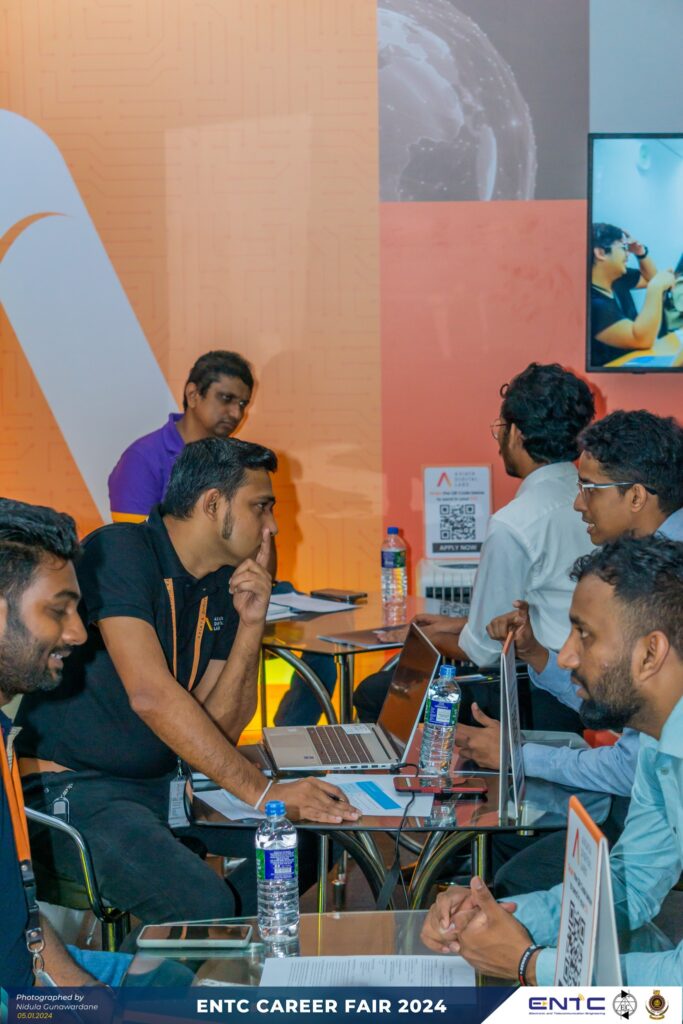




Department Receives a Laboratory Equipment Upgrade with Four Tektronix TBS1052 Oscilloscope
The Department of Electronic and Telecommunication Engineering of the University of Moratuwa has received a laboratory equipment upgrade with four Tektronix TBS1052 Oscilloscopes. The oscilloscopes were acquired through funding from the SPARK project, which seeks to recognize individuals and groups who devise unique, innovative, socially, and environmentally responsible solutions that foster significant positive transformations in society, industry, and the broader environment. The TBS1052 Oscilloscope is a digital storage oscilloscope that provides affordable performance in a compact design. It comes with a 7-inch WVGA TFT color display, up to 2 GS/s sampling rate, bandwidth of 50 MHz, and dual channel frequency counters.

The Department of Electronic and Telecommunication Engineering has about 25 workstations each in both analog and digital electronics laboratories, enabling about 50 students to be accommodated simultaneously. Each workstation has a dual-tracking power supply, an analog multimeter, a digital multimeter, a signal generator, and a digital storage oscilloscope. The new Tektronix TBS1052 Oscilloscopes will replace old ones and support regular laboratory classes and SPARK projects.

The University of Moratuwa has always been at the forefront of innovation and research in electronics, telecommunications, biomedical engineering, and allied disciplines in engineering. The success of the Department of Electronic and Telecommunication Engineering is a testament to the quality of education and research offered by the university.

Picture source: https://www.tek.com/en/datasheet/digital-storage-oscilloscope-tbs1000c-series-datasheet
Read MoreENTC Open Day
The Department of Electronic and Telecommunication Engineering at the University of Moratuwa held an Open Day on January 17, 2023, to showcase the department’s facilities, projects, and laboratories to the new intake of students. The event was organized by the Electronic Club and saw a large number of students in attendance.
The Open Day began with a series of brief talks by the faculty members of the department, who provided an overview of the programs and opportunities available. The students were then given the opportunity to explore the department’s facilities and interact with faculty members and senior students.
The final year, third year, and second-year students actively participated in the event, organizing, demonstrating, and explaining various aspects of the department’s projects and facilities to the prospective students.
The Open Day showcased many projects, including final-year projects in computer vision, metaverse, augmented reality, unmanned aerial vehicles (UAVs), machine learning, software-defined radio, mobile robotics, electronics, and processor design. In addition, the second-semester projects were also demonstrated.
The prospective students were taken on a tour of the department’s various laboratories, including the biomedical engineering laboratory, analog electronics laboratory, digital electronics laboratory, telecommunication laboratory, computer vision laboratory, unmanned aerial vehicles laboratory, and K. K. Y. W. Perera Mobile Communications laboratory, among many other facilities.
The Open Day was well-received by the students, who appreciated the opportunity to experience the department’s facilities and projects first-hand. Many of the prospective students expressed their interest in pursuing a career in electronic and telecommunication engineering, noting the exciting and diverse range of projects and opportunities available within the field.
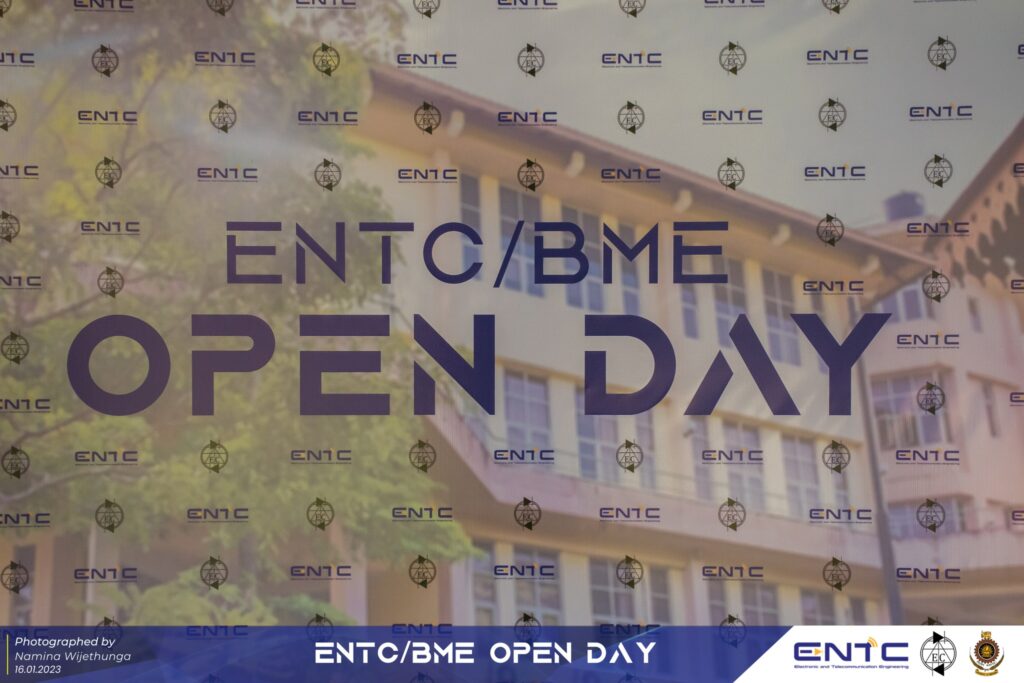








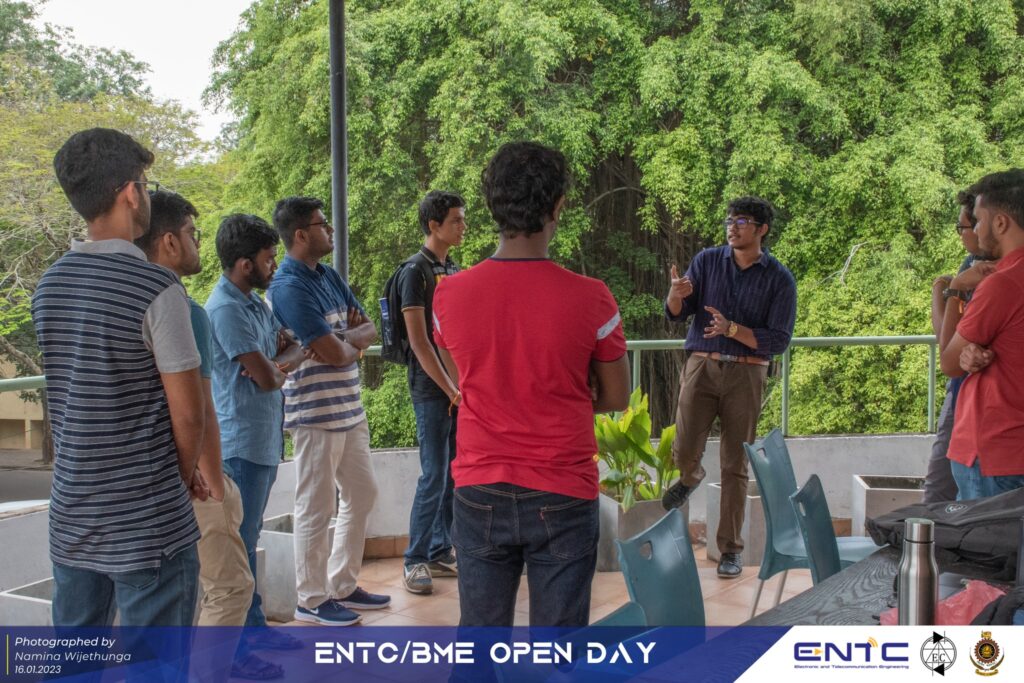
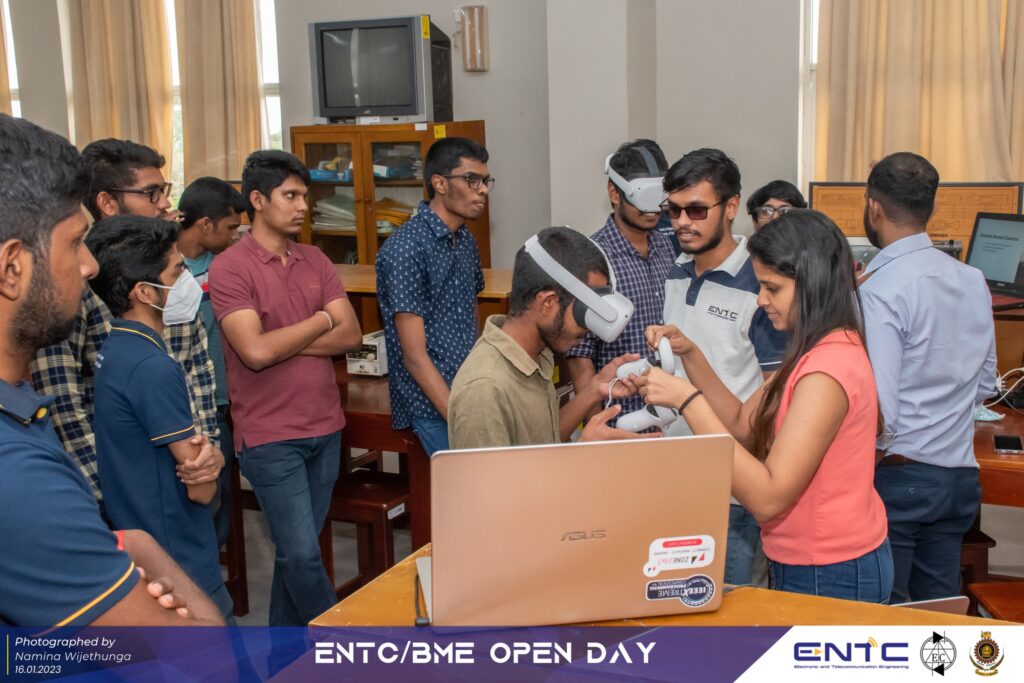

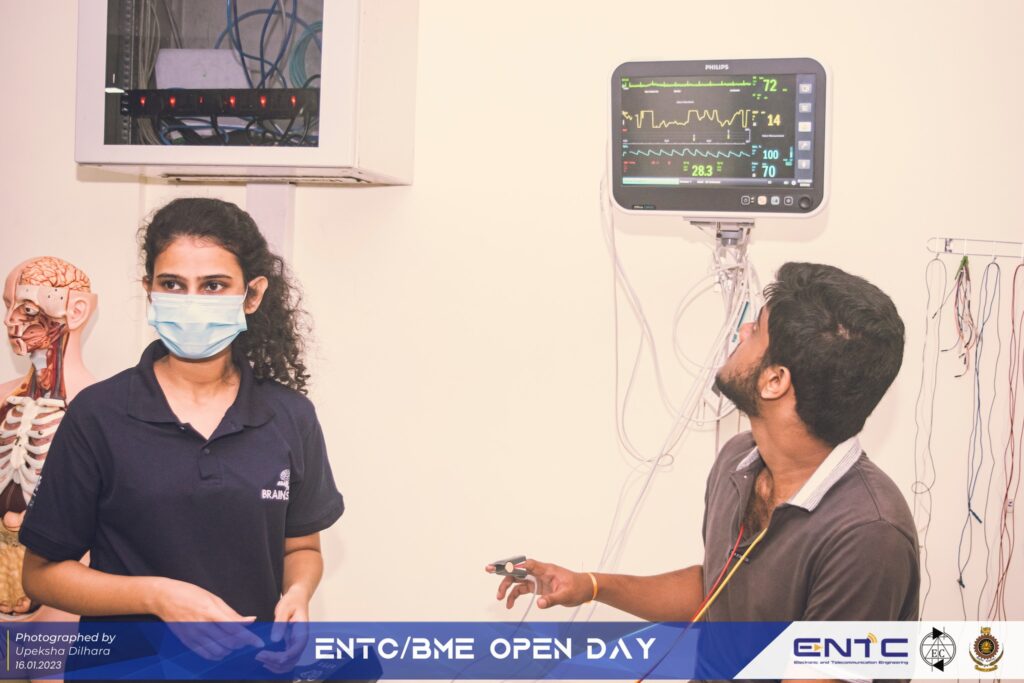
Workshop on Quantum Computing
The Electronic and Telecommunication Engineering Department of the University of Moratuwa, in collaboration with the UBC Quantum Club, IEEE Sri Lanka Section, and Skill Surf, organized a one-day workshop on “Introduction to Quantum Computing” on January 21, 2023. The workshop aimed to introduce participants to the basics of quantum computing, its applications, and its future potential. The workshop featured key resource personnel who are experts in the field of quantum computing. Dr. Harini Hapuarachchi from RMIT University, Australia, Mr. Kithmin Wickremasinghe from the University of British Colombia, Canada, Mr. Ravi Tharaka from Monash University, Australia, and Theshani Nuradha from Cornell University, USA, were the keynote speakers for the workshop.
The one-day workshop attracted a significant number of participants, including students, academics, and industry professionals. The workshop offered a comprehensive introduction to the basics of quantum computing, including quantum mechanics, qubits, quantum gates, quantum circuits, and quantum algorithms. Participants also had the opportunity to learn about quantum computing applications in various fields, including cryptography, machine learning, and optimization. The workshop included interactive sessions, demonstrations, and hands-on exercises to provide a practical understanding of the concepts covered in the lectures. The resource personnel also provided valuable insights into the future of quantum computing and the opportunities it presents.

The workshop was a great success, with participants expressing their satisfaction with the content and delivery of the program. The participants also had the opportunity to network and exchange ideas with the experts in the field. The organizers of the workshop thanked the resource personnel, participants, and sponsors for making the event a success. They also encouraged participants to continue to explore the world of quantum computing and stay updated with the latest developments in the field.
Overall, the “Introduction to Quantum Computing” workshop was a great initiative by the Electronic and Telecommunication Engineering Department of the University of Moratuwa, together with its partners. The department has a thrust area in quantum computing. The workshop was an excellent opportunity for participants to expand their knowledge and skills in quantum computing and explore the exciting potential of this emerging field.
Read MoreCeremonial Opening of K. K. Y. W. Perera Mobile Communications Laboratory
The Department of Electronic and Telecommunication of the University of Moratuwa, Sri Lanka, recently celebrated the opening of its new K. K. Y. W. Perera Mobile Communications Laboratory, which was established in collaboration with SLT-Mobitel and Huawei Technologies on 12 December 2022. The lab was named in honor of Vidyajothi Prof. K. K. Y. W. Perera, the founding head of the Department of Electronic and Telecommunication Engineering and the current chancellor of the university.
The ceremonial opening was attended by a number of university officials, including the Vice Chancellor, Prof. N. D. Gunawardena, the Deputy Vice Chancellor, Prof. D. P. Chandrasekara, and the Acting Dean of the Faculty of Engineering, Prof. Asoka Perera. The event was also attended by representatives from SLT-Mobitel, including Mr. Rasantha Hettithanthrige, the Chief Technology Officer of Mobitel (Pvt.) Ltd., who took pioneered the establishment of the laboratory, and Mr. Raveendra Manivelwadu, as well as Mr. Rohan Fernando, Chairman of SLT-Mobitel, Mr. Lalith Mohan Seneviratne, Group Chief Executive Officer of SLT-Mobitel, Mr. Janaka Abeysinghe, Chief Executive Officer of Sri Lanka Telecom, Mr. Chandika Vitharana, Chief Executive Officer of Mobitel (Pvt.) Ltd., Mr. Saman Abeysekera, Chief Operating Officer of Sri Lanka Telecom, Mr. Prabhath Dahanayake, Chief Marketing Officer of Sri Lanka Telecom, Mr. Sudharshana Geeganage, Chief Financial Officer of Mobitel (Pvt.) Ltd., and Mr. Saman Perera, Group Chief Information Officer of SLT-Mobitel. Representatives from Huawei Sri Lanka also attended the event, including Mr. Tony Lee, Chief Technology Officer, Mr. Indika De Zoysa, Strategic Advisor, and Mr. Nadun Gunawardena. The ceremony was also attended by student representatives, including the President of the Electronic Club and four student network administrators.
The mobile communication laboratory will be an invaluable resource for teaching wireless communication and telecommunication core networks. As the demand for skilled professionals in these fields continues to grow, the laboratory will provide students with the opportunity to gain hands-on experience in a real-world environment. This will not only enhance their knowledge and skills, but also prepare them for successful careers in the telecommunications industry.
In addition to providing practical experience, the mobile communication laboratory will also allow students to keep pace with the latest developments in the field. With the rapid advancement of technology, it is essential for students to stay up-to-date on the latest techniques and methods used in the telecommunications industry. The laboratory will provide them with the opportunity to learn about and experiment with the latest technologies and innovations.
Overall, the establishment of the K. K. Y. W. Perera Mobile Communications Laboratory is a major milestone for the University of Moratuwa. It will provide students with the opportunity to gain valuable knowledge and experience, and prepare them for successful careers in the rapidly evolving telecommunications industry. The university community is excited to see the impact this facility will have on the education and training of its students. Special thanks go to Dr. Jayathu Samarawickrama for coordinating the establishment of the laboratory on behalf of the department.

Multi-Label Reduced-Lead EEG Classification Using CNNs
Nima Wickramasinghe from the Department of Electronic and Telecommunication Engineering (ENTC), together with his mentor Mohamed Athif from the Department of Biomedical Engineering, Boston University (previously an undergraduate at ENTC) have written a research paper, titled “Multi-label Classification of Reduced-lead ECGs using an Interpretable Deep Convolutional Neural Network” which has been accepted to be published in the journal Physiological Measurement as a special issue paper.
In their work, they propose a novel method to identify the presence of 26 cardiac abnormalities in an ECG recording with reduced leads. Even though most of the previous work relies on 12-lead ECGs, classification using reduced leads remained unexplored. In their research, they trained a deep convolutional neural network to classify the ECG recordings and showed that the reduced-lead model performs comparably to the 12-lead model. In addition to accurately classifying the cardiac abnormalities, they have used SHAP (shapley additive explanations: a game-theoretic approach used to explain the output of any machine learning model) to interpret the deep learning model. The authors identified that the model learns almost the same diagnostic criteria used by cardiologists to classify cardiac abnormalities. By analyzing the model through SHAP, they were able to detect why the model underperforms in some of the classes, which was mainly due to the lack of discriminating features in reduced leads, labeling inconsistencies in the dataset, and low number of samples.
Physiological Measurement is a journal that covers the quantitative measurement and visualization of physiological structure and function in clinical research and practice, with an emphasis on the development of new methods of measurement and their validation. The Sustainable Education Foundation facilitated the collaboration between the 2 authors.
DOI Link to the paper: https://doi.org/10.1088/1361-6579/ac73d5
Read MoreMr. Pasan Dissanayake and Dr. Prathapasinghe Dharmawansa of ENTC have Published Two Research Papers in the Prestigious Journal IEEE Transactions on Information Theory
Two research papers written by Mr. Pasan Dissanayake and Dr. Prathapasinghe Dharmawansa of ENTC have been published in the prestigious journal IEEE Transactions on Information Theory. IEEE Transactions on Information Theory is the world’s No. 1 journal in the areas of Information and Communication theory research. This truly exceptional achievement will make the research history of ENTC. This extraordinary academic achievement will be a guiding spirit for the current and future researchers in the entire university system of Sri Lanka. Moreover, it will help place ENTC among the top researchers in information and communication theory in the world. The details of the two papers are as follows.
1. Distribution of the Scaled Condition Number of Single-spiked Complex Wishart Matrices
This paper statistically characterizes the scaled condition number (SCN) of single-spiked complex Wishart matrices by deriving its density function. The statistical characteristics of the SCN and its variants have been instrumental in understanding many physical phenomena across a heterogeneous field of sciences. While numerical analysts and statistical physicists are interested in the behavior of the SCN for white Wishart matrices, the case corresponding to correlated Wishart matrices are of paramount importance in wireless communications and statistics. In particular, the SCN has been used as a performance metric in certain wireless signal processing applications involving multiple-input multiple-output (MIMO) systems, in which the antenna correlation gives rise to the correlated Wishart matrix. Recently, the SCN has been proposed as one of the test statistics for blind spectrum sensing in cognitive radio (CR) systems. The key concept behind CR is to opportunistically utilize the underutilized spectrum in view of improving the spectral efficiency of modern wireless networks. Against this backdrop, this paper leverages powerful random matrix theoretic techniques and the novel density of the SCN to statistically characterize the receiver operating characteristics (i.e., ROC) of the aforementioned detector. Since the modern wireless architectures facilitate the use of large antenna/sensor arrays with comparable observational sample acquisition, the analysis has been extended to the asymptotic regime in which the number of antennas of the detector and the samples diverge at the same rate so that their ratio remains constant. It turns out that, in this asymptotic regime, the statistical power of the SCN based detector can be approximated by the most celebrated Tracy-Widom distribution corresponding to the complex matrices. Moreover, numerical results have revealed that those asymptotic results compare favourably with their not so large dimensional counterparts.
2. The Eigenvectors of Single-spiked Complex Wishart Matrices: Finite and Asymptotic Analyses
This paper investigates the finite dimensional distributions of the eigenvectors corresponding to the extreme eigenvalues (i.e., the minimum and the maximum) of single-spiked complex Wishart matrices. These spikes arise in various practical settings in different scientific disciplines. For instance, they correspond to the first few dominant factors in factor models arising in financial economics, the number of clusters in gene expression data, and the number of signals in detection and estimation theory. In particular, the focus is on the distributions of the squared modulus of the eigen-projectors (i.e., projection of the spiked-vector onto the leading and least eigenvectors) of single-spiked Wishart matrices. This metric is commonly used to infer information about the latent spiked-vector using the eigenvectors of the sample covariance matrix. A concrete example in this respect is the principal component analysis (PCA) in which the eigenvectors of the unknown population covariance matrix is approximated by the eigenvectors of the sample covariance matrix. This metric has further been used in the covariance estimation based on the optimal shrinkage of the eigenvalues of the sample covariance matrix in the high dimensional setting when the unobserved population covariance matrix assumes the spiked structure. This paper leverages the powerful contour integral representation of unitary integrals and orthogonal polynomial techniques to derive closed-form expressions for the densities of the above metrics. A somewhat surprising stochastic convergence result pertaining to the above metrics has also been established. Finally, the same analytical framework has been extended to derive the corresponding destines for real and singular Wishart scenarios; however, with closed-form solutions limited to a few special configurations only.
UOM Emerged as the Champions of the Students Challenge in the ICAS 2021 Conference
Team DigitX, a team of ten undergraduates from the Department of Electronic and Telecommunication Engineering (ENTC) under the supervision of Dr. Chamira Edussooriya from ENTC, University of Moratuwa, emerged as the champions of the Students Challenge at the Internal Conference on Autonomous Systems (ICAS) 2021 conference. The conference was held virtually in Montreal, Canada from August 11 to 13, 2021.
ICAS 2021 is the premier international forum organized by the IEEE Signal Processing Society (SPS) through IEEE SPS Autonomous Systems Initiative, for presenting the technological advances and research results in the fields of theoretical, experimental and applied autonomous systems. IEEE ICAS was held for the first time this year and it focused on providing an updated state-of-the-art over advanced signal processing theories and techniques that are relevant for developing autonomous systems.
The ICAS 2021 Students Challenge was on “unsupervised anomaly detection through self-aware autonomous systems”, to detect abnormal events during the navigation of a ground/ aerial vehicle. The team was able to develop an unsupervised learning algorithm with state-of the-art signal processing and machine learning techniques such as auto-encoders, recurrent neural networks for time-series data signal processing.

Based on the inertial measurement unit (IMU) sensor data, video data captured by the cameras of autonomous systems in several camera perspectives and light detection and ranging (LIDAR) sensor data (point clouds), the unsupervised model was trained to identify the normal situations that it saw during the training phase as normal and every other situation as abnormal (as per the challenge requirement a reference normal scenario was defined for each dataset). UoM won the first place while a team from Indian Institute of Technology (IIT), India and a team from CentralSupelec, France won first and second runners up, respectively.
An autonomous system is an artificial system capable of performing a set of tasks with a high degree of autonomy. Developing computing systems with advanced levels of autonomy has been a crucial task for decades in order to manage ever-increasing requirements in complexity. This achievement by UoM places Sri Lanka at a higher position in the world signal processing community.
Read More
